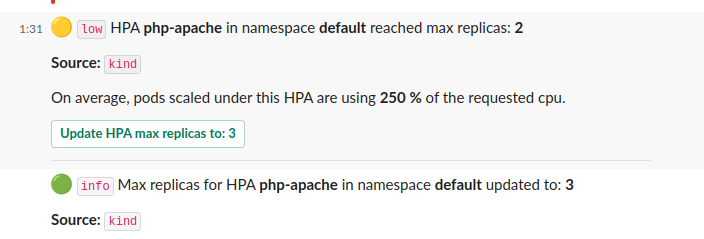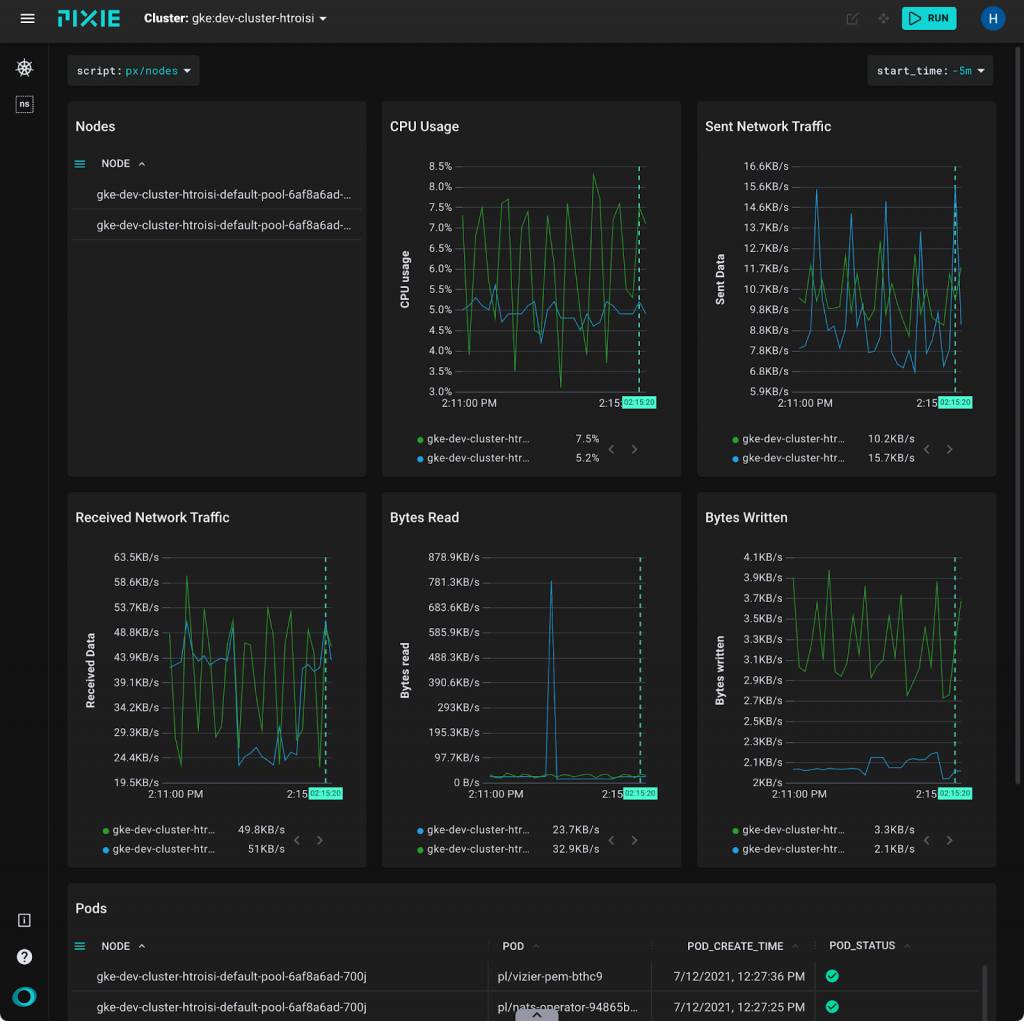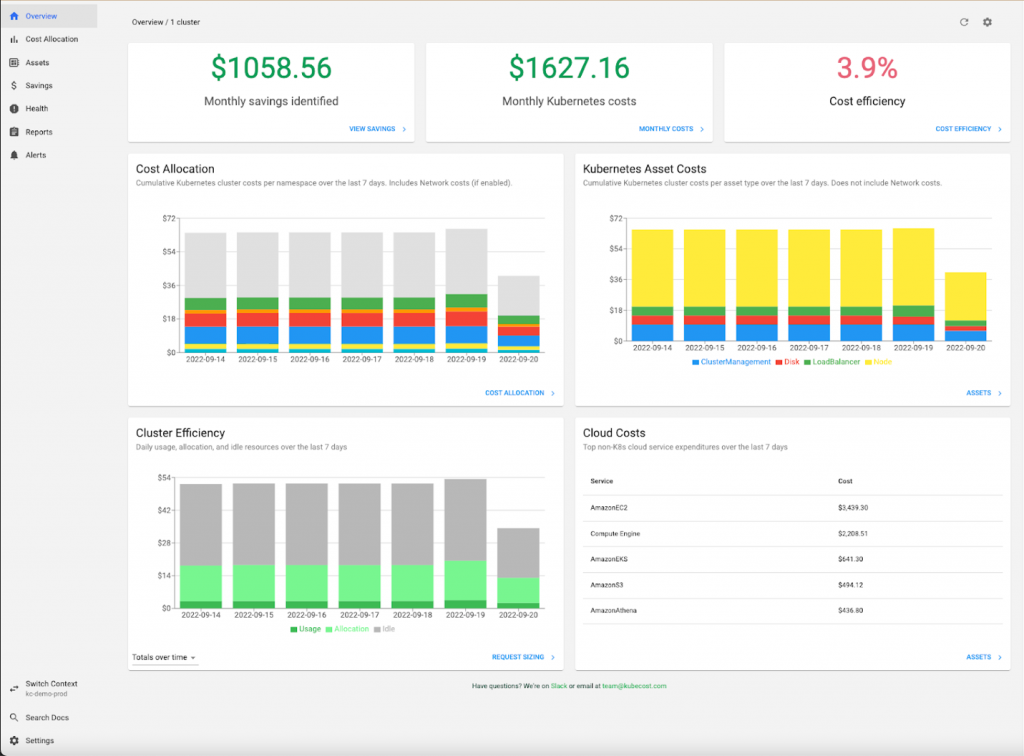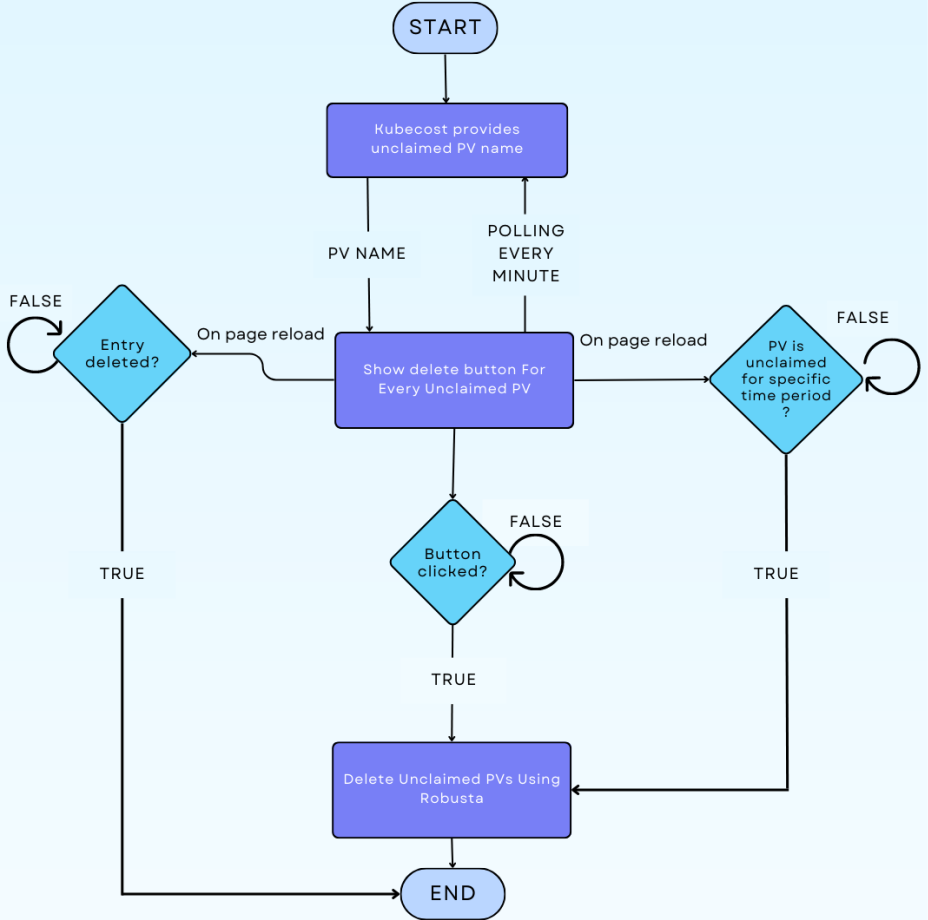Introducing XkOps: An Open Source tool for implementing a robust observability strategy
Join us in developing the XkOps community! We’re extending an invitation to all interested collaborators. XkOps is freely available under the Apache 2.0 license, and we encourage everyone to contribute to the project by reporting issues and submitting enhancements. Our goal is to expand the tool’s functionality by extending support to all cloud platforms and introducing new features. If you have any suggestions, we’d love to hear them. Share your ideas with us through our XkOps community. Let’s work together to make XkOps the best it can be!
Downloads
Article (PDF-276 KB)MOST POPULAR INSIGHTS
No related posts found
Why Build XkOps?
A comprehensive approach to observability for a Kubernetes cluster necessitates stringent oversight of CRS (cost optimization, reliability and security) at every stage in the product life cycle. This is now more challenging than ever due to the complex and distributed nature of contemporary cloud environments.
Building on the importance of CRS (cost optimization, reliability, and security) in cloud deployments, we strongly believe that observability is a critical prerequisite to achieving these goals. In complex cloud-native environments such as Kubernetes, having a clear understanding of the system’s current state and identifying any events that alter its state is essential for the smooth operation of mission-critical applications. Prioritizing observability allows for early insights into your environment, offers better control over costs, increased application reliability, and state-of-the-art cloud security. By staying on top of the three foundational components of modern cloud deployments, you can ensure that your system is optimized for cost, maintains reliable performance, and is secure throughout its life cycle.
To achieve observability in Kubernetes environments, there are various open-source and proprietary tools available that can help with cost optimization, reliability, and security. For cost optimization, Kubecost, Opencost, Anodot, and CloudCustodian are popular tools. To ensure maximum uptime and reliable infrastructure, Prometheus, Datadog, Grafana, Robusta, Pixie, and Pagerduty are among the widely used options. Similarly, for securing Kubernetes clusters, tools such as SIEM datadog, Snyk k8s policy and config checker, and custom frameworks for specific misconfigs can be used. Given the abundance of available options, it can be challenging to confidently select and utilize the right tools to achieve observability.
XkOps answers the need for an all-encompassing strategy to achieve observability in Kubernetes environments. Featuring state-of-the art open source tools preconfigured into a comprehensive solution, this tool provides reliable cost optimization, reliability and security that are invaluable during development or maintenance of any cloud deployment. With XkOps, users can confidently monitor their environment throughout its product life cycle with ease.
How XkOps works?
XkOps is a powerful and comprehensive solution that simplifies Kubernetes observability challenges. It achieves this by combining popular open-source tools like Kubecost, Robusta, and Pixie into a single Docker image. This results in improved cost control, reliability, and security in cluster operations, which ultimately enhances observability. With XkOps, users can conveniently assess the costs, reliability, and security of their Kubernetes clusters, making it easier to manage their clusters and derive valuable insights. Additionally, XkOps integrates these tools to provide seamless and coherent functionality with minimal human intervention. This combination of powerful tools makes Kubernetes’ observability and cluster management more efficient, cost-effective, and secure.Although our current offerings include a single out-of-the-box workflow, we are continuously expanding our library to provide additional options for users.
Let’s take a closer look at how Kubecost, Robusta, and Pixie are utilized by XkOps and how these tools contribute to resolving Kubernetes observability challenges.
Kubecost:
XkOps utilizes Kubecost for cost monitoring in Kubernetes environments, leveraging the OpenCost models originally developed and open-sourced by Kubecost. These models provide visibility into current and historical Kubernetes spending and resource allocation, offering cost transparency.
By offering real-time visibility, cost tracking by namespace or application, and cost optimization recommendations, Kubecost helps organizations reduce their spend by 30-70% on average. Kubecost’s seamless integration with various cloud providers and Kubernetes distributions makes it a top choice for optimizing cloud expenditures and improving resource efficiency in organizations with independent team provisioning.
The Kubecost dashboard, as depicted in the image above, provides a comprehensive overview of a Kubernetes cluster’s cost-related information. It displays the total savings identified and total costs incurred by the cluster, along with detailed insights into how individual assets within the cluster are incurring costs. Additionally, the dashboard presents a cluster efficiency analysis over a period of time, allowing users to track and optimize cost management in their Kubernetes environment.
Robusta:
Incorporating Robusta into XkOps boosts cluster reliability and uptime by seamlessly connecting to the Kubernetes API and monitoring Kubernetes changes. Robusta, an open-source platform designed for Kubernetes troubleshooting and multi-cluster observability, actively listens to all events in your cluster, provides valuable insights on triggers behind alerts, concurrent occurrences, and recommends actions. By enhancing existing alerts or creating new ones based on changes in your Kubernetes cluster, Robusta empowers Kubernetes administrators to efficiently identify, troubleshoot, and mitigate issues such as crashing pods, high CPU usage, and excessive memory consumption. With the seamless integration of Robusta, Kubernetes administrators can confidently address and resolve various challenges, ensuring smooth operation of their clusters.

In the image above, we can see that Robusta sends a notification whenever the Horizontal Pod Autoscaler (HPA) reaches its maximum replicas, providing an opportunity to address the issue. Users have the option to update the HPA’s maximum replicas by clicking on a remediation action right within the chat, which will automatically increase the maximum replicas to resolve the situation.
Pixie:
Pixie, an open-source observability platform for Kubernetes clusters. that uses eBPF, improves reliability by providing effortless cluster-wide visibility into resources, performance, and events, eliminating the need for manual instrumentation or service restarts. With its plug-and-play architecture, Pixie offers granular observability, allowing users to track cluster resources, analyze cluster events, and diagnose cluster problems quickly. Its platform-wide observability enables users to see everything in their clusters, understand how nodes, pods, containers, and applications impact each other, and receive real-time alerts for critical issues, ensuring reliable and efficient operation of Kubernetes clusters.

In the image provided, the user has executed a script called px/nodes by Pixie, which provides a convenient way to gather high-level resource usage information for all nodes in their Kubernetes cluster. The output of the script includes a comprehensive list of all the nodes in the cluster, along with key metrics such as CPU usage, memory consumption, and network traffic statistics. Additionally, the script also presents a list of pods that were running on each node during the specified time window. This valuable information can assist users in gaining insights into the overall performance and resource utilization of their Kubernetes cluster.
Unlocking XkOps Potential: Introducing X-Workflows
X-Workflow 1: Identifying and Deleting Unclaimed Volumes
Are you looking to identify and delete any unclaimed volumes in your Kubernetes environment that are costing you money?
Our team has created this out-of-the-box offering that integrates with Kubecost to gather cost information about volumes and then communicates with Robusta to delete them. However, we understand that simply deleting all unclaimed volumes may not always be the best approach if you are not application or context-aware. That’s why our solution is configurable and can be automated but requires user input through a single click to delete. We provide policies to build customizable workflows tailored to your needs, and any gaps can be addressed by creating an issue or open-source pull request. With this solution, you can optimize your Kubernetes costs with confidence.
To use this workflow, you need first install XkOps it on your cluster by following the instructions in the README guide. After installation, you can access Kubecost, Robusta, and Pixie tools, which help you manage costs and improve reliability. With the XkOps dashboard, you can access recommendations related to unused unclaimed volumes, and with a single click, you can delete them using Robusta. The dashboard offers insights into your infrastructure, allowing you to make data-driven decisions to enhance operations.
The XkOps dashboard shown in the image above offers users a simple way to manage unclaimed volumes in their Kubernetes cluster. This dashboard displays a comprehensive list of all the unclaimed volumes in the cluster, allowing users to easily identify and remove them. By removing these unused volumes, users can reduce unnecessary costs and optimize their Kubernetes environment.To simplify the process of removing unclaimed volumes, XkOps has integrated Robusta, a powerful tool that automates volume deletion. The user can simply click the delete button on the XkOps dashboard, and Robusta will take care of the rest in the background. This process requires minimal effort from the user, making volume management quick and efficient.
Although the current offering of XkOps provides only one workflow to identify and delete unclaimed volumes, the team is committed to expanding its library with more customizable workflows tailored to the specific needs of users.
What’s next for XkOps?
The XkOps project is just getting started, and the team is eager to hear from you as they continue to add new features iteratively. They have already begun work on additional workflows to remediate cluster problems based on the recommendations of open-source tools integrated with XkOps. Support for more cloud environments is also in progress, as well as a revamp of the XkOps dashboard and much more. As a team, they are committed to supporting and contributing to the success of the open-source projects that XkOps depends on, including Robusta, Pixie, and Kubecost. One of the most exciting aspects of XkOps is its ability to highlight the projects it relies on and promote their growth and development. Be sure to stay tuned for more updates and new features as the project evolves!
Going forward, we welcome you to be a part of Xkops community where you can share your thoughts by starting a discussion, suggesting new ideas, or reporting any bugs you may find. Your contributions are valuable to us, and we are excited to evolve XkOps in public by building milestones and a roadmap based on feedback from our users and contributors. So come and be a part of our journey as we strive to make XkOps even better!
For our product overview: watch this video.
For the product demo: watch this video.
ABOUT THE AUTHOR(S)
AUTHOR(S)
By Muhammad Ali Khan with Abid Iqbal
Related Articles
No related posts found
Related Articles
No related posts found
Established in 2012, Xgrid has a history of delivering a wide range of intelligent and secure cloud infrastructure, user interface and user experience solutions. Our strength lies in our team and its ability to deliver end-to-end solutions using cutting edge technologies.
OFFICE ADDRESS
US Address:
Plug and Play Tech Center, 440 N Wolfe Rd, Sunnyvale, CA 94085
Pakistan Address:
Xgrid Solutions (Private) Limited, Bldg 96, GCC-11, Civic Center, Gulberg Greens, Islamabad
Xgrid Solutions (Private) Limited, 10th floor, Haly Tower, Sector R, DHA, Phase 2, Lahore




